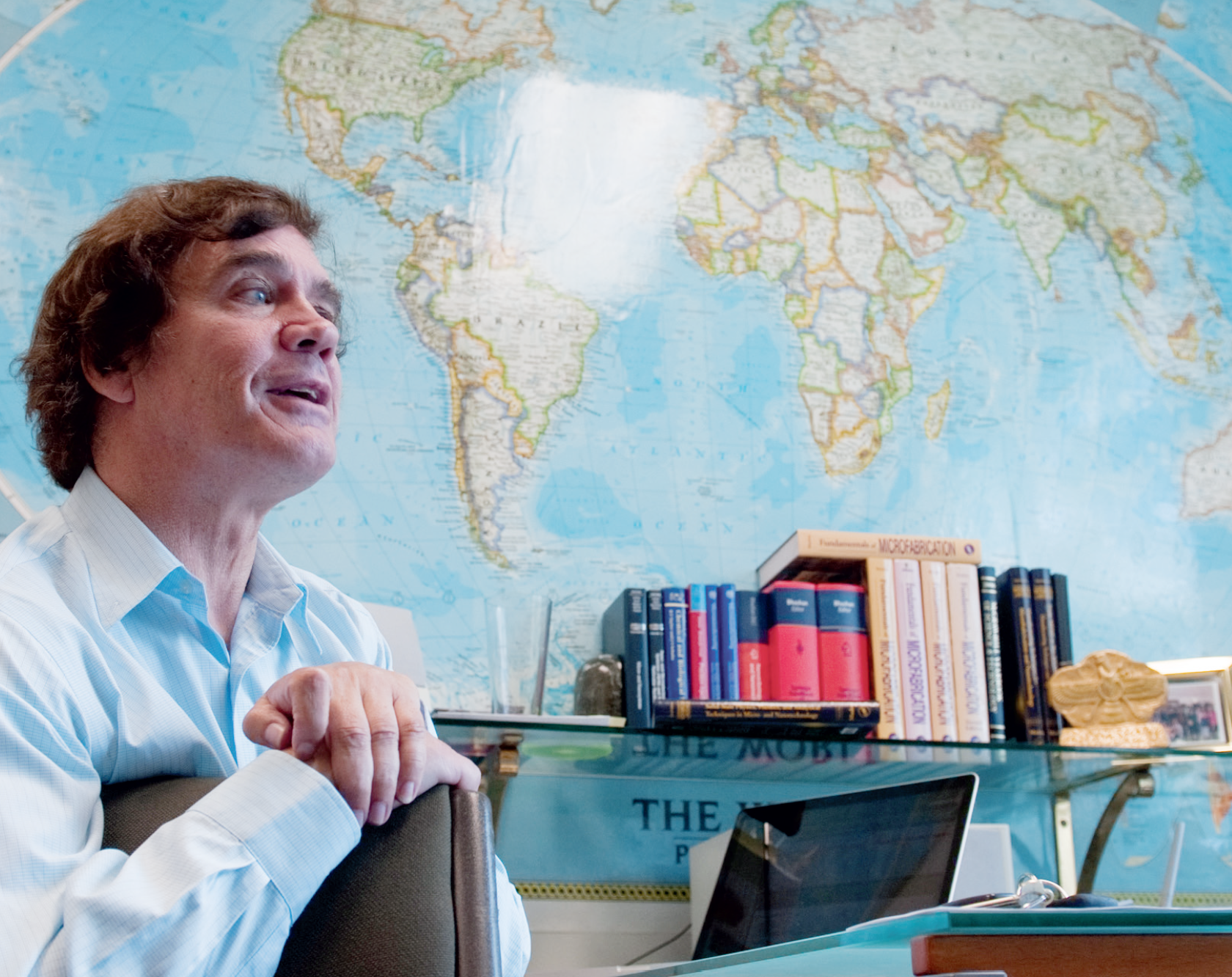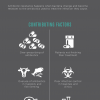Over Prescribed
CD-based microfluidics pioneer furthers technology to tackle global health threat
 Nov. 13, 2017 - When most people look at a compact disc player, they think music. Not Marc Madou. He contemplates using centrifugal force to channel microliters of body fluids – urine or blood – from point to point to identify a disease or an infection. He sees a CD-based microfluidic medical diagnostic device.
Nov. 13, 2017 - When most people look at a compact disc player, they think music. Not Marc Madou. He contemplates using centrifugal force to channel microliters of body fluids – urine or blood – from point to point to identify a disease or an infection. He sees a CD-based microfluidic medical diagnostic device.
A UC Irvine Chancellor’s Professor of mechanical and aerospace engineering, Madou pioneered the technology about 18 years ago. A powerful, aff ordable and potent medical diagnostic tool, it has since been commercialized by half a dozen companies.
Now, Madou is putting it to work on one of today’s biggest threats to global health: antibiotic resistance.
According to the World Health Organization, “antibiotic resistance is rising to dangerously high levels” in all parts of the world. New resistance mechanisms are emerging and spreading, threatening our ability to treat common infectious diseases. A growing list of infections – pneumonia, tuberculosis, blood poisoning and gonorrhea – are becoming harder, and sometimes impossible, to treat as antibiotics become less effective.
The threat is heightened in countries without standard treatment guidelines, where antibiotics are often over-prescribed and overused, and in places where they can be purchased without a prescription. WHO warns that without urgent action, we are heading for a post-antibiotic era, in which common infections and minor injuries can once again kill.
“Antibiotic resistance is a huge public health problem,” says UCLA pediatric urologist Dr. Bernard Churchill, who along with UCLA infectious disease specialist Dr. David Haake, has spent the past 15 years tackling the issue. They formed medical device company MicrobeDX and have turned to Madou to help take their idea to the next level.
Currently, the conventional process of detecting and identifying potential bacteria strains in patients with a possible urinary tract infection, for instance, takes 48 to 72 hours. That’s not counting transportation time for the sample to go from doctor’s office to laboratory. So in the majority of cases, physicians make an educated guess as to which antibiotic drug to prescribe – before the lab identifies the actual bacterium. According to Churchill, in the U.S. last year, 50 percent of these scrips were unnecessary, inappropriate or incorrect, contributing greatly to the development of antibiotic resistance.
Churchill and Haake created a diagnostic assay that more quickly detects and identifies the type of bacterium and then screens it for antibody sensitivity. “We wanted to completely revolutionize the field of diagnostic microbiology,” says Churchill. “It was too slow, big and cumbersome.”
This new assay uses ribosomal ribonucleic acid (rRNA) and a biosensor, giving the medical community the information it needs for evidence-based antibiotic therapy in less than three hours. However, it is still performed in a laboratory. The next challenge is to affordably scale up the process and reduce the time it takes to transport samples. That’s where Madou and his 10-member team of graduate students come in. Turns out his spin stand and microfluidic CD design capabilities are a perfect match for this bacteria identification and antibody sensitivity test.
“This is a fantastic assay,” says Madou. “We’ve put all the steps on our platform, and we not only automate it but can make it better, faster and more reproducible. And the entire test can take place in the doctor’s office or health clinic, wherever the specimen has been collected.”
Alexandra “Sasha” Perebikovsky, a Ph.D. student in physics and lead researcher in Madou’s bioMEMS lab, explains that the original benchtop assay, conducted manually, involved 88 steps and huge preparation. “We were able to drastically simplify the process by condensing it to five basic steps. We also cut the time needed for the bacteria to grow by improving the incubation with oscillation and a heated chamber.”
The spin stand, or box, is custom designed for the assay. It includes a motor, an array of magnets, small heater, laser valving and a camera for detection.
Once they hooked up with Madou, MicrobeDX made rapid progress. “It was really the ideal platform for operationalizing our assay,” says Mazi Zarrehparvar, MicrobeDX president. “So many functions are doable in a CD format, and Marc came up with a cell lysis approach on a CD that outperformed anything that we’d ever seen, even with expensive machines and traditional approaches.”
Madou envisions applying this technology to health challenges in the U.S. and around the world. He says that when scaled up, CD-based microfluidic technology could help solve many health problems in rural remote areas of developing nations and resource-constrained environments: places like India, Africa and Mexico, where people have scarce access to health care.
He calls it extreme point of care, or EPOC, and he is working with Dr. Satadal Saha and engineer Chandra Sharma on a plan to implement this idea in rural India, under an Indian government-funded multi-institutional research project called Impacting Research Innovation and Technology (IMPRINT).
“Currently, there is no provision of diagnostic facilities in rural areas in India. Whatever little is available is of very poor quality and unreliable,” says Saha, a co-principal investigator on IMPRINT. Diagnostic and other technologies are either too expensive, making it unaffordable for the poor, or require sensitive environmental conditions and skilled labor for operation – criteria often not available in rural environments. “Samples, when transported far for tests, deteriorate due to improper handling and storage. If patients travel far for tests, the consequent secondary expense (travel, food, lost daily wages) is enormous, thus acting as a detriment.”
As a pilot endeavor, Saha and his team have established three rural health kiosks in remote villages in West Bengal, staff ed by local women formally trained as health workers, who deliver very basic medical care. Th e workers use an innovative software system to share data with remote doctors who then decide on a clinical management plan. Th e health worker can communicate with the doctor over the phone to prescribe medication and give patient instructions.
“With Marc’s ideas and MicrobeDX technology, we could enable the health workers to undertake diagnostic tests at the kiosks,” says Saha. “Th e results will automatically feed into the software ecosystem and generate a comprehensive dataset for the patient’s management plan.”
Th is technology could go a long way toward improving health care by identifying bacteria and testing for antibody sensitivity. It can also rule out diseases, preventing misdiagnoses and unnecessary prescriptions. In total, Madou has designed multiple assays for use with CD-based microfl uidic diagnostics, and he’s working on a next-generation version with a smartphone attachment.
In a recent TEDx talk, Madou explains what drives him: “For me, being a scientist and being curious are all the same thing. It’s life. I am endlessly curious. Right now, I’m thinking all about how to use this technology worldwide to solve health problems; it would be tremendous.”
- Lori Brandt


